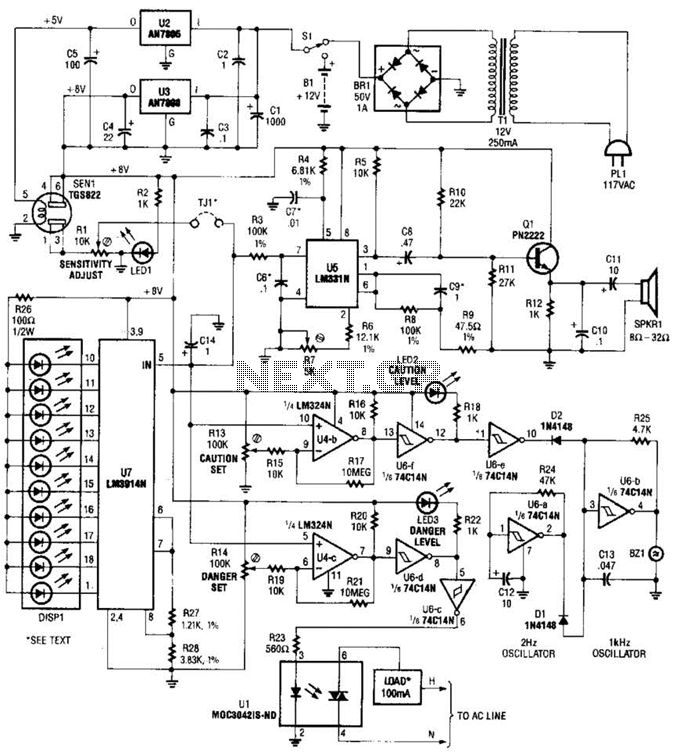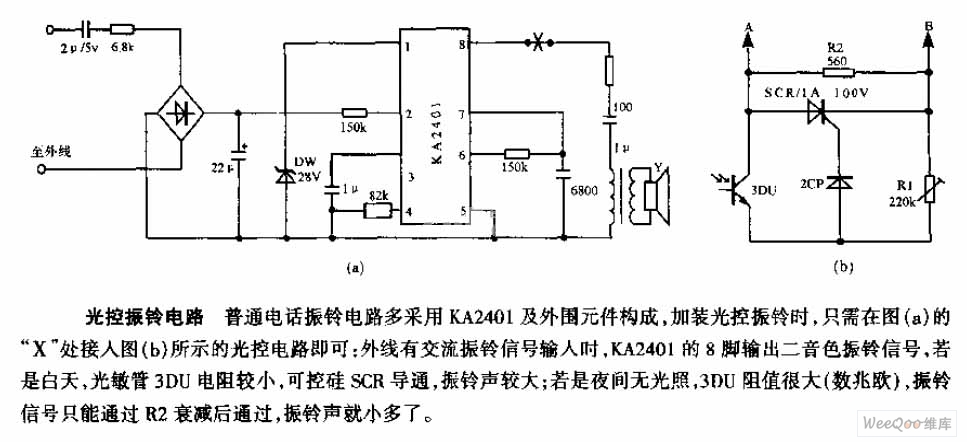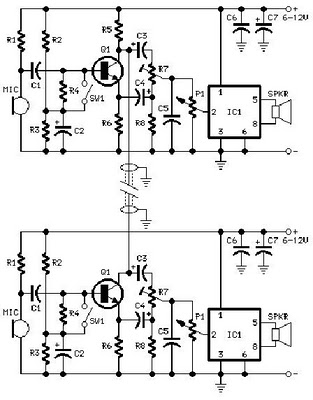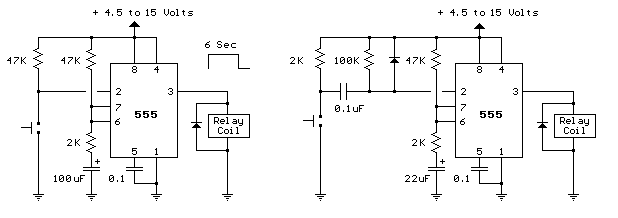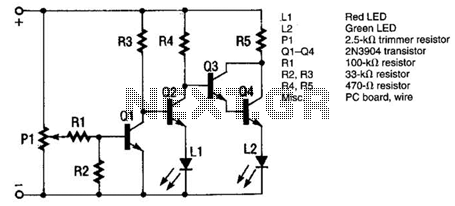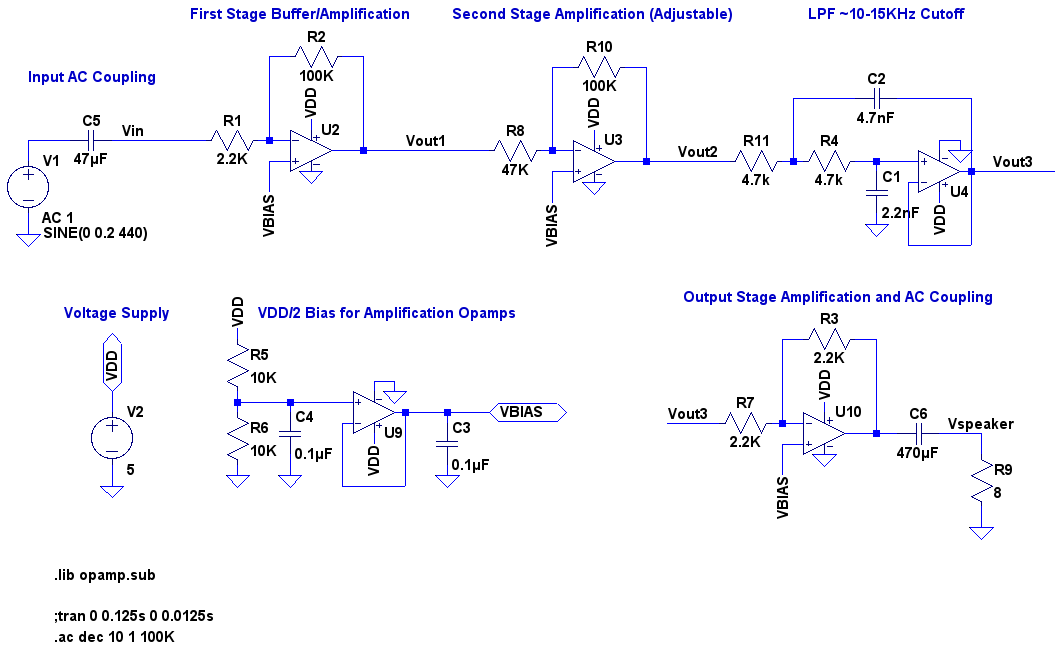
Soft Circuit Singing Pig with Wigs Part 2 Circuit
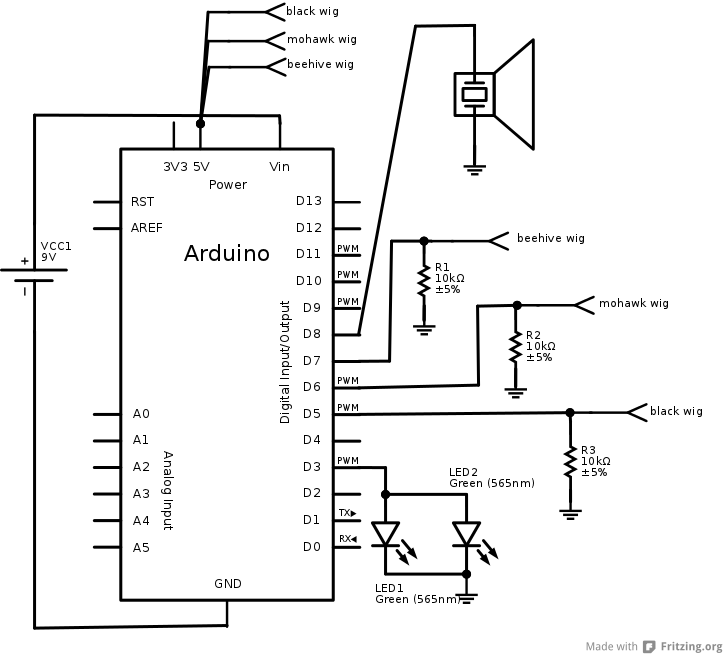
The interaction design for the singing pig was to have a different song start playing when a different wig is placed on the pig. The pig needed to stand by itself without being connected to anything else, and the wigs needed to look like ordinary wigs for pigs. The method of attaching the wigs to the pig was intended to be similar to any other stuffed toy, but it also required the ability to pass current and electrically trigger events on an Arduino. Metal snaps were chosen for this purpose, as they effectively interface between hard components (typical circuit elements) and soft components (conductive thread). The circuit is relatively simple: an Arduino controls a pair of LEDs in parallel on the same pin, a buzzer on another pin, and three digital switches with pull-down resistors on three additional pins. An early prototype was constructed on a breadboard. Excluding the Arduino and 9V battery, all components were integrated into the pig or wigs, with only the sewing snaps, LED eyes, and the on/off switch exposed externally. Conductive thread was utilized for connections between components and to link the snaps to the internal circuit. However, since the circuit was based around an Arduino Uno, the soft circuit had to interface with header pin connections. This was achieved by stripping wire, looping it around needle-nosed pliers at one end, and sewing it into the circuit. The other end of the wire connected to the Arduino. Initially, an Arduino Mini Pro was intended for use, with soldered connections, but this approach proved too ambitious given the Christmas deadline. Inside each wig, a wire was sewn to two male snaps. Wire was preferred over conductive thread for its robustness, and since it was concealed within the wig, concerns about bulkiness were minimized. An image of the interior of the beehive wig before it was fully knitted and stuffed is provided.
The electronic circuit design for the singing pig toy incorporates several key components and design considerations to facilitate the interaction mechanism. The primary control unit is an Arduino Uno, which is responsible for managing input from the switches and outputting signals to the LEDs and buzzer. The use of metal snaps as connectors allows for a seamless integration of the wigs with the pig, enabling an effective electrical connection while maintaining the aesthetic appeal of the toy.
The circuit configuration includes two LEDs connected in parallel to a single output pin on the Arduino. This configuration allows for simultaneous illumination of both LEDs, which serve as the pig's eyes, enhancing the visual feedback when a wig is attached. The buzzer, connected to a separate pin, produces sound output corresponding to the selected wig, creating an engaging auditory experience.
Three digital switches, each equipped with pull-down resistors, are incorporated into the design to detect the presence of different wigs. When a wig is attached, the corresponding switch is activated, sending a signal to the Arduino. The pull-down resistors ensure that the input pins are held low when the switches are open, preventing false triggering.
The integration of conductive thread and wire within the design allows for flexibility in the circuit layout. Conductive thread is employed for connections between the internal components, while more robust wire is utilized for critical connections, particularly those that interface with the Arduino. This hybrid approach balances the need for flexibility with the durability required for the toy's operation.
The design also takes into account the physical structure of the toy, ensuring that all electronic components, except for the visible elements, are securely housed within the pig and wigs. This not only preserves the toy's appearance but also protects the electronics from external damage.
Overall, the circuit design is a thoughtful blend of aesthetics and functionality, enabling the singing pig to deliver an interactive experience through sound and light, while remaining playful and visually appealing.The interaction design for the singing pig was to have a different song start playing when a different wig is placed on the pig. The pig needed to stand by itself without being connected to anything else and the wigs needed to look like nothing out of the ordinary (ordinary wigs for pigs, that is).
I wanted the way the wigs attach to the pig to be no different than any other stuffed toy, but they also need to pass current and electrically trigger events on an Arduino. Metal snaps were my go-to item as they very nicely interface between hard components (things you normally associate with a circuit) and soft components (conductive thread).
The circuit is quite simple: an Arduino controlling a pair of LEDs in parallel on the same pin; a buzzer on another pin; and three digital switches with pull down resistors on three other pins. Below is an early prototype on a breadboard: Excluding the Arduino and 9v battery, all of the components were attached to the inside of the pig or wigs.
Only sewing snaps, the LED eyes, and the on/off switch were exposed to the outside of the toy. Conductive thread was used for runs between components and to connect the snaps to the interior circuit, but since the circuit centered around an Arduino Uno, the soft circuit needed to interface with header pin connections. To do this, wire was stripped and looped around needle-nosed pliers at one end and then sewn into the circuit.
The other end of the wire then connected to the Arduino. This was not the original intention I had wanted to use an Arduino Mini Pro and solder the connections into place, but that proved to be too ambitious within the Christmas deadline. Inside each wig was a wire sewn to two male snaps. I used wire instead of conductive thread because it`s a more robust material and as it was hidden inside the wig, wasn`t worried about it being bulkier than thread.
Below is the inside of the beehive wig before it was completely knit and stuffed. 🔗 External reference
The electronic circuit design for the singing pig toy incorporates several key components and design considerations to facilitate the interaction mechanism. The primary control unit is an Arduino Uno, which is responsible for managing input from the switches and outputting signals to the LEDs and buzzer. The use of metal snaps as connectors allows for a seamless integration of the wigs with the pig, enabling an effective electrical connection while maintaining the aesthetic appeal of the toy.
The circuit configuration includes two LEDs connected in parallel to a single output pin on the Arduino. This configuration allows for simultaneous illumination of both LEDs, which serve as the pig's eyes, enhancing the visual feedback when a wig is attached. The buzzer, connected to a separate pin, produces sound output corresponding to the selected wig, creating an engaging auditory experience.
Three digital switches, each equipped with pull-down resistors, are incorporated into the design to detect the presence of different wigs. When a wig is attached, the corresponding switch is activated, sending a signal to the Arduino. The pull-down resistors ensure that the input pins are held low when the switches are open, preventing false triggering.
The integration of conductive thread and wire within the design allows for flexibility in the circuit layout. Conductive thread is employed for connections between the internal components, while more robust wire is utilized for critical connections, particularly those that interface with the Arduino. This hybrid approach balances the need for flexibility with the durability required for the toy's operation.
The design also takes into account the physical structure of the toy, ensuring that all electronic components, except for the visible elements, are securely housed within the pig and wigs. This not only preserves the toy's appearance but also protects the electronics from external damage.
Overall, the circuit design is a thoughtful blend of aesthetics and functionality, enabling the singing pig to deliver an interactive experience through sound and light, while remaining playful and visually appealing.The interaction design for the singing pig was to have a different song start playing when a different wig is placed on the pig. The pig needed to stand by itself without being connected to anything else and the wigs needed to look like nothing out of the ordinary (ordinary wigs for pigs, that is).
I wanted the way the wigs attach to the pig to be no different than any other stuffed toy, but they also need to pass current and electrically trigger events on an Arduino. Metal snaps were my go-to item as they very nicely interface between hard components (things you normally associate with a circuit) and soft components (conductive thread).
The circuit is quite simple: an Arduino controlling a pair of LEDs in parallel on the same pin; a buzzer on another pin; and three digital switches with pull down resistors on three other pins. Below is an early prototype on a breadboard: Excluding the Arduino and 9v battery, all of the components were attached to the inside of the pig or wigs.
Only sewing snaps, the LED eyes, and the on/off switch were exposed to the outside of the toy. Conductive thread was used for runs between components and to connect the snaps to the interior circuit, but since the circuit centered around an Arduino Uno, the soft circuit needed to interface with header pin connections. To do this, wire was stripped and looped around needle-nosed pliers at one end and then sewn into the circuit.
The other end of the wire then connected to the Arduino. This was not the original intention I had wanted to use an Arduino Mini Pro and solder the connections into place, but that proved to be too ambitious within the Christmas deadline. Inside each wig was a wire sewn to two male snaps. I used wire instead of conductive thread because it`s a more robust material and as it was hidden inside the wig, wasn`t worried about it being bulkier than thread.
Below is the inside of the beehive wig before it was completely knit and stuffed. 🔗 External reference
Warning: include(partials/cookie-banner.php): Failed to open stream: Permission denied in /var/www/html/nextgr/view-circuit.php on line 713
Warning: include(): Failed opening 'partials/cookie-banner.php' for inclusion (include_path='.:/usr/share/php') in /var/www/html/nextgr/view-circuit.php on line 713
